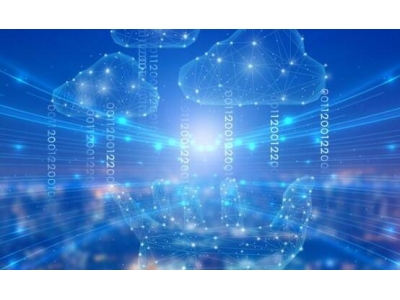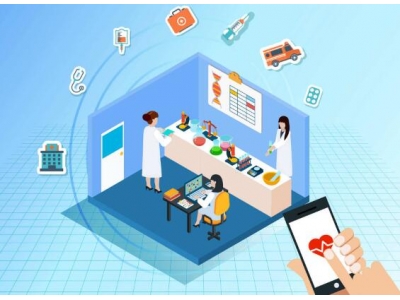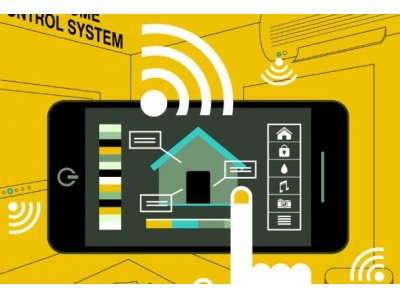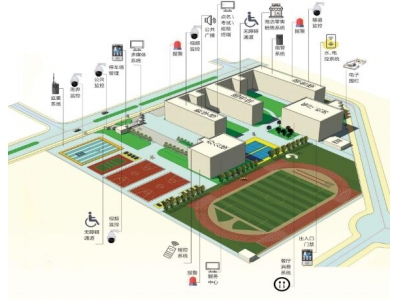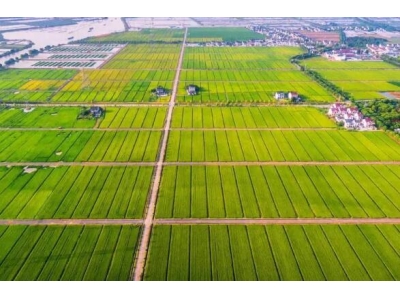一、互联网时代管理模式
互联网时代管理模式的变革与挑战
在互联网时代的浪潮中,传统的管理模式亦面临着巨大的变革和挑战。随着互联网技术的发展,企业的管理方式不再局限于传统的层级结构和集中式决策,而是更加注重信息共享、开放性沟通和灵活的组织架构,这进一步推动了互联网时代管理模式的变革。
在互联网时代,管理模式需要具备以下几个关键特征:
- 平等开放:在互联网时代,组织架构应该更加扁平化,打破传统的等级制度,让每一个员工都有平等的发言权和参与决策的机会。同时,开放性的沟通和信息共享也是互联网时代管理模式中的重要环节。
- 创新驱动:互联网时代注重创新,传统的保守和守旧的管理模式已经无法满足企业的需求。管理者们需要鼓励员工的创造力和想象力,提供创新的环境和机会,以提高企业的竞争力。
- 灵活适应:在互联网时代,市场环境变化迅速,企业需要能够迅速调整和适应变化的管理模式。灵活的组织架构和敏捷的决策过程成为了互联网时代管理模式中的重要组成部分。
- 数据驱动:互联网时代数据无处不在,管理模式也需要借助数据来进行决策和优化。数据分析和挖掘成为了管理者们必备的能力之一,只有通过深入了解数据,才能更好地引导企业的发展。
互联网时代管理模式的变革给传统企业和管理者们带来了巨大的挑战。传统的管理模式中,管理者往往是权威的代表,他们会下达指令、控制资源和监督员工的工作。然而,在互联网时代,这种传统的管理方式变得越来越不适用。
互联网时代的员工更加注重自主性和创造力,他们不再愿意被束缚在传统的层级制度中。他们渴望发表自己的观点、参与决策,并且希望能够在工作中发挥自己的所长。因此,管理者需要转变自己的角色,从单纯的管理者转变为企业的引导者和协调者。
互联网时代的管理者不再是权威的代表,而是组织中的一员,他们需要与员工保持良好的沟通,并且鼓励员工发挥自己的创造力和想象力。他们需要提供创新的环境和机会,用数据来指导决策,并且能够灵活调整组织结构以适应市场的变化。
互联网时代的管理者们还需要具备一定的技能和知识,以更好地适应快速变化的环境。数据分析和挖掘成为了管理者们必备的能力之一,只有通过深入了解数据,才能更好地引导企业的发展。此外,管理者还需要具备创新思维和团队协作的能力,与员工密切合作,共同推动企业的创新和发展。
综上所述,互联网时代管理模式的变革是企业发展的必然趋势。只有适应这种变革,转变管理方式和角色,企业才能在激烈的市场竞争中立于不败之地。互联网时代的管理模式是平等开放、创新驱动、灵活适应和数据驱动的,只有具备这些关键特征的企业才能获得持续的竞争优势。
二、互联网时代又称?
互联网时代又叫E时代。“E时代”中的“E”是英文electronic(电子)的缩写。E时代,最初用来指电子(electronic)电子时代,电脑网络出现后产生了Email,电子信件以其快速,简便,多功能等在很短的时间内颠覆了传统的手写邮寄信件,同时微软的"浏览e"的出现,为我们的网络生活注入新体验。随着E化的应用范围不断发展、深化,我们又迎来了电子商务,连我们日常生活密切相关的市场和交易都E化了;相信,随着网络市场交易的不断壮大,E市场必将颠覆了传统的市场交易。
三、互联网时代文案?
很重要因为在互联网时代,信息量日益增长,人们的注意力变得越来越难以抓住。文案作为传递信息的有效手段,在吸引读者注意、传递信息、营销推广等方面发挥着重要作用。此外,文案不仅需要注重吸引读者的注意力,还要考虑读者的情感需求,通过精准的定位和排版,有效传递信息,从而达到预期目的。在互联网时代,文案更需要不断创新与改进,因为只有能够不断吸引读者的注意,才能够在这个信息爆炸的时代中立于不败之地。
四、互联网时代时间?
1994年
中国互联网从1994年正式接入国际网络,应当说从94年开始发展的。 中国互联网已经发生了三次大浪潮。分别是1994年到2000年,2001年到2008年,2009到如今。 第一次互联网大浪潮,从四大门户到搜索引擎。
五、互联网时代符号?
IE的全称是Internet Explorer,意思是“互联网探索者”,非常形象的翻译。E标志取自Explorer的头一个字母。
从第三代才开始是字母“e”的,前两代的图标是微软标识和microsoft internet explorer
六、工业互联网的管理模式
工业互联网的管理模式探讨
随着科技的不断发展,工业互联网作为一种新兴的管理模式,正在逐渐改变传统工业企业的运营方式。它通过将传感器、设备、网络和分析技术相互连接,实现了生产数据的采集、分析和应用,为企业提供了更高效、更智能的生产手段和管理方法。那么,工业互联网的管理模式究竟是什么?又如何应用于实际工业生产中呢?本文将对这一话题进行深入探讨。
1. 工业互联网的概念与特点
工业互联网是指通过物联网、大数据、云计算等信息技术手段,将生产设备和生产者进行高效连接和数据交互,实现生产过程的智能化和自动化。其特点主要包括:
- 数据化:工业互联网以数据为核心,通过传感器和设备的连接,实现了对生产数据的全面采集和监控。
- 智能化:通过对采集到的数据进行分析和挖掘,工业互联网可以帮助企业实现智能生产,提升生产效率和质量。
- 协同化:工业互联网可以实现企业内外各个环节之间的协同工作,提高资源利用率和生产效益。
- 可追溯性:工业互联网可以对生产过程进行全程追溯,实现对产品质量和安全的管控。
2. 工业互联网的管理模式
工业互联网的管理模式主要包括智能制造、云制造和数字化管理三个方面。
2.1 智能制造
智能制造是工业互联网的重要组成部分,它通过将生产设备和生产线连接到互联网上,实现生产过程的自动化和智能化。通过传感器对设备状态和生产数据进行实时监控,可以及时发现和解决生产中的问题,提高生产效率和质量。同时,智能制造还可以将数据和模型应用于产品设计、生产计划和供应链管理等环节,实现资源的优化配置和生产过程的整合优化。
2.2 云制造
云制造是指通过云计算技术,将工业企业的生产资源互连互通,实现生产过程的共享和协同。云制造通过建立统一的云平台,将生产数据、设备信息和专家知识进行集成和共享,实现生产资源的优化配置和协同调度。企业可以通过云制造平台进行生产计划的编制、设备资源的调度和生产过程的监控,提高生产的灵活性和效率。
2.3 数字化管理
数字化管理是指通过信息技术手段,对企业的生产和管理过程进行数字化改造和优化。通过传感器和设备的连接,可以实现对生产数据的实时监控和分析。通过大数据和人工智能的应用,可以对生产过程进行预测和优化,提高生产的可靠性和稳定性。同时,数字化管理还可以实现对企业内外各个环节的信息共享和协同,优化企业的资源配置和业务流程。
3. 工业互联网的应用案例
工业互联网已经在多个行业得到了广泛应用,以下是几个典型案例:
- 智能制造:某汽车制造厂将生产线上的各个设备和机器人连接到互联网上,通过对生产数据的实时监控和分析,实现了生产过程的智能化和自动化,提高了生产效率和产品质量。
- 云制造:某电子制造企业通过建立云制造平台,实现了供应链各环节之间的协同工作,提高了生产资源的利用率和生产效益。
- 数字化管理:某化工企业通过数字化管理系统,实现了对生产过程的实时监控和预测,提高了生产的可靠性和稳定性。
4. 工业互联网的未来展望
工业互联网作为一种新兴的管理模式,将会在未来持续发展和创新。随着5G技术的广泛应用和人工智能技术的进一步成熟,工业互联网将实现更高速、更智能的连接和管理。未来,工业互联网将进一步推动制造业的转型升级,提升我国制造业的核心竞争力。
总而言之,工业互联网的管理模式通过物联网、大数据和云计算等技术手段,实现了生产设备和生产者的高效连接和数据交互。它的应用将带来工业生产效率的提高、质量的提升和资源的优化配置。未来,工业互联网将成为推动中国制造业高质量发展的重要力量。
(Translated Content) htmlDiscussion on the Management Model of Industrial Internet
With the continuous development of technology, as an emerging management model, the industrial internet is gradually changing the operational methods of traditional industrial enterprises. By connecting sensors, devices, networks, and analytics technologies, it enables the collection, analysis, and application of production data, providing enterprises with more efficient and intelligent means of production and management. So, what exactly is the management model of the industrial internet? And how does it apply to actual industrial production? This article will delve into this topic.
1. Concept and Characteristics of the Industrial Internet
The industrial internet refers to the efficient connection and data interaction between production equipment and producers through information technology such as IoT, big data, and cloud computing, realizing the intelligence and automation of the production process. Its main characteristics include:
- Data-driven: The industrial internet revolves around data and achieves comprehensive collection and monitoring of production data through the connection of sensors and devices.
- Intelligence: By analyzing and mining the collected data, the industrial internet helps enterprises achieve intelligent production, improving production efficiency and quality.
- Collaboration: The industrial internet enables collaboration between different internal and external stages, improving resource utilization and production efficiency.
- Traceability: The industrial internet enables full traceability of the production process, ensuring control over product quality and safety.
2. Management Models of the Industrial Internet
The management models of the industrial internet mainly include intelligent manufacturing, cloud manufacturing, and digitized management.
2.1 Intelligent Manufacturing
Intelligent manufacturing is an important component of the industrial internet. By connecting production equipment and assembly lines to the internet, it achieves automation and intelligence in the production process. Real-time monitoring of equipment status and production data using sensors allows timely detection and resolution of production issues, thereby improving production efficiency and quality. Moreover, intelligent manufacturing applies data and models to product design, production planning, and supply chain management, optimizing resource allocation and integrating production processes.
2.2 Cloud Manufacturing
Cloud manufacturing refers to the sharing and collaboration of production resources in industrial enterprises through cloud computing technology. By establishing a unified cloud platform, cloud manufacturing integrates and shares production data, equipment information, and expert knowledge, enabling optimization and coordination of production resources. Enterprises can use cloud manufacturing platforms for production planning, equipment resource scheduling, and production process monitoring, improving production flexibility and efficiency.
2.3 Digitized Management
Digitized management involves the digital transformation and optimization of an enterprise's production and management processes through information technology. Real-time monitoring and analysis of production data can be achieved through the connection of sensors and devices. By applying big data and artificial intelligence, digitized management enables the prediction and optimization of the production process, enhancing production reliability and stability. Furthermore, digitized management facilitates information sharing and collaboration across various stages within and outside the enterprise, optimizing resource allocation and business processes.
3. Examples of Industrial Internet Applications
The industrial internet has been widely applied in various industries. Here are a few typical examples:
- Intelligent Manufacturing: An automobile manufacturing plant connects production line equipment and robots to the internet. Through real-time monitoring and analysis of production data, intelligent manufacturing achieves automation and intelligence in the production process, improving production efficiency and product quality.
- Cloud Manufacturing: An electronics manufacturing company establishes a cloud manufacturing platform, enabling collaboration between various stages of the supply chain and improving resource utilization and production efficiency.
- Digitized Management: A chemical enterprise achieves real-time monitoring and prediction of the production process through a digitized management system, enhancing production reliability and stability.
4. Future Prospects of the Industrial Internet
As an emerging management model, the industrial internet will continue to develop and innovate in the future. With the widespread application of 5G technology and the further maturity of artificial intelligence, the industrial internet will achieve faster and smarter connectivity and management. In the future, the industrial internet will further promote the transformation and upgrading of the manufacturing industry, enhancing the core competitiveness of manufacturing in China.
In conclusion, the management model of the industrial internet efficiently connects production equipment and producers through IoT, big data, and cloud computing, among other technologies. Its application leads to improved production efficiency, quality, and optimized resource allocation. In the future, the industrial internet will become a significant driving force for high-quality development in China's manufacturing industry.
七、互联网时代后将迎来什么时代?
互联网之后便是物联网时代的到来。2020年之后,我国即正式进入5G网络时代,据估计:5G网络的传输速度至少是目前4G网络的100倍,在如此快捷的网络支持下,便可让原先根本不可能的无人驾驶汽车成为了可能,在如此快捷的网络支持下,我们就有可能在晚上刚从淘宝网上选购的衣服或其他物品,笫二天早上便已安全送达到你的手里。
八、互联网时代之前之后是什么时代?
互联网时代之前是信息时代,也叫电子时代、数字时代,指的是二十世纪八十年代后期至九十年代初期,宏观经济学上定位于工业革命后的第三产业,以计算机、互联网和信息技术为基础的时代。在信息时代,计算机和网络技术快速发展,人们信息获取和传递的方式发生了深刻的变化,对各个领域产生了极大影响。而互联网时代,指的是以互联网为核心的信息化时代,这是21世纪人类文明的最新发展阶段,互联网深刻改变了人类所生活的世界。
九、互联网时代过去新时代是什么?
互联网时代过去新时代是5G时代
十、互联网时代的开端?
1969年因特网出现是互联网的开端。
因特网始于1969年的美国。是美军在ARPA(阿帕网,美国国防部研究计划署)制定的协定下,首先用于军事连接,后将美国西南部的加利福尼亚大学洛杉矶分校、斯坦福大学研究学院、UCSB(加利福尼亚大学)和犹他州大学的四台主要的计算机连接起来。这个协定由剑桥大学的BBN和MA执行,在1969年12月开始联机。

